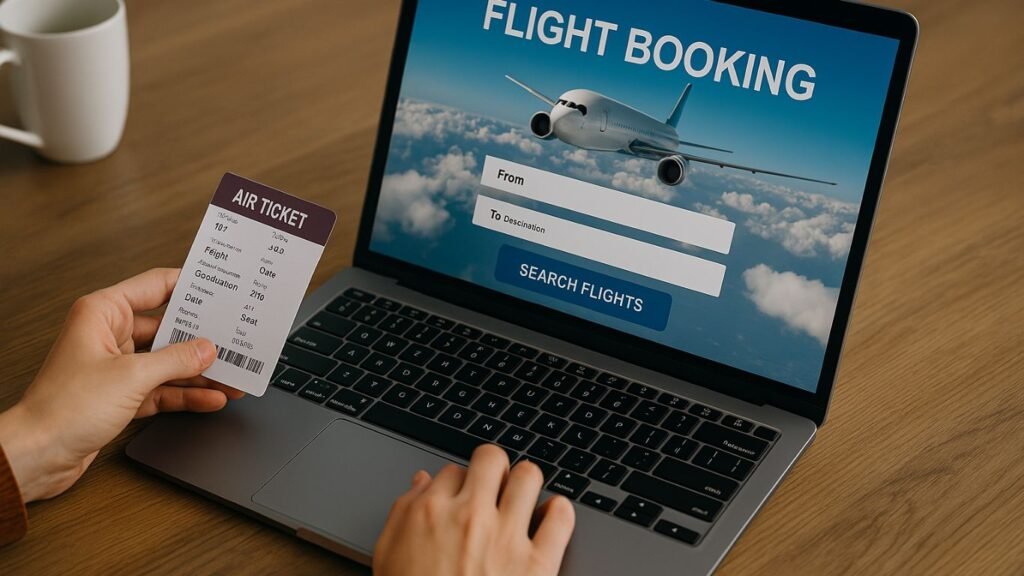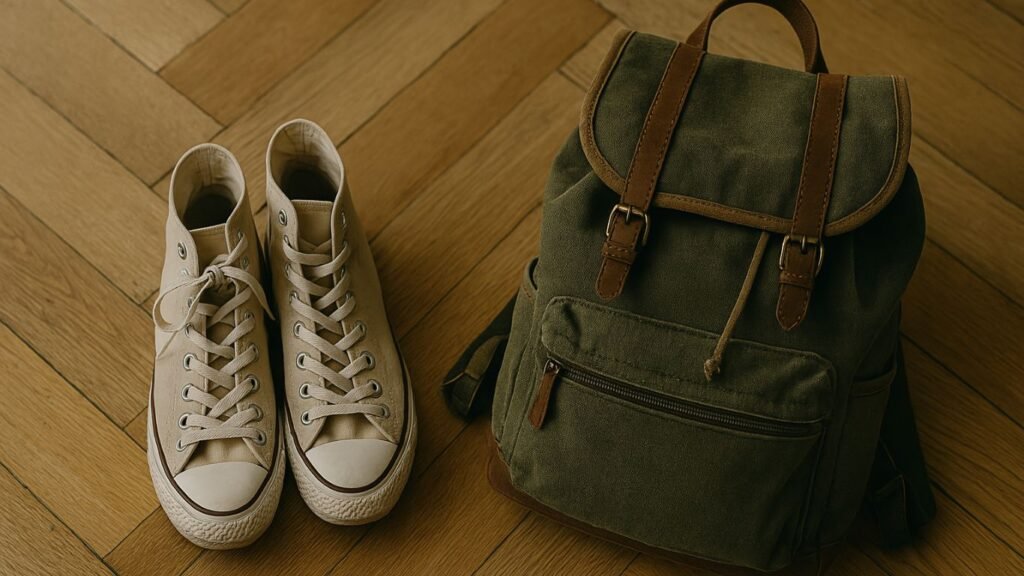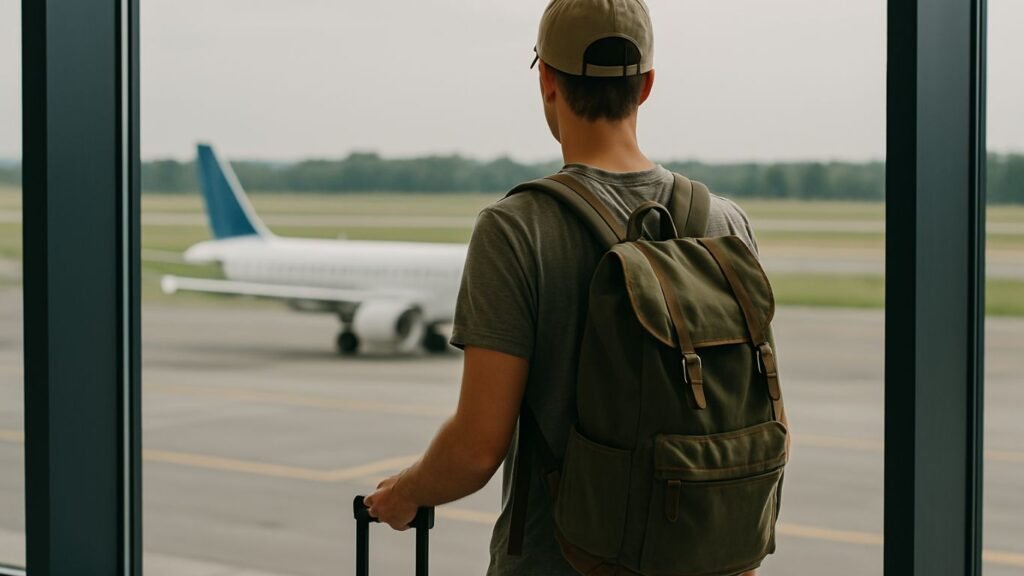There’s a unique thrill that comes with booking your first solo flight. It’s not just about the destination—it’s the act of stepping into independence, of testing your ability to navigate the world on your own terms. Whether you’re planning a quiet retreat in the mountains, a vibrant city escape, or a cultural deep dive in a foreign land, flying solo for the first time is a rite of passage. And like any meaningful journey, it deserves thoughtful preparation.
This step-by-step guide to planning your first trip is more than just a checklist. It’s a comprehensive blueprint crafted for first-time solo travelers who crave clarity, confidence, and control over their travel experience. You’ll learn how to set travel goals that align with your interests, find the right flights and accommodations, organize your itinerary with intention, and embrace the unpredictable beauty of solo travel with grace.
Planning your first trip alone can feel overwhelming—an endless scroll of tabs, travel blogs, YouTube vlogs, and booking sites. I’ve been there. My first solo trip was a blur of excited chaos. I forgot to check visa requirements, overpacked, and completely missed a cultural festival I had originally wanted to see. But that imperfect journey taught me the value of smart preparation. And that’s what this guide offers: not perfection, but a strategy that ensures you feel ready—mentally, logistically, and emotionally.
So, if you’re ready to plan a trip that’s more than just a getaway—one that sparks transformation, builds confidence, and creates unforgettable memories—this guide is your perfect starting point.
Table of Contents
1. Setting Your Intentions & Choosing Your Destination
Before you open flight comparison sites or map out must-see landmarks, take a step back. The foundation of a successful solo trip lies in intention—knowing why you want to travel and what you hope to gain from the experience. This part of the step-by-step guide to planning your first trip is often overlooked, but it’s where clarity begins. Let’s break it down.
Defining Your Travel Goals
Ask yourself: What does this trip mean to you? Are you seeking solitude and self-discovery? Adventure and adrenaline? Culture and cuisine? Your “why” will shape everything—from destination choice to daily activities.
For example, if you’re looking to disconnect and recharge, a scenic village in the Swiss Alps might align better than a fast-paced Tokyo itinerary. Craving creativity and culture? Consider a city like Florence or Oaxaca, where art, food, and history thrive on every corner.
Journaling your intentions can help. Write a few sentences about what you’re hoping to feel or accomplish by the end of your trip. This becomes your internal compass as you continue through this step-by-step guide to planning your first trip.
Researching Potential Destinations
With your goals in hand, start exploring destinations that match your vision. Use tools like Google Flights’ Explore Map, Pinterest, Reddit’s r/solotravel community, and blogs like Wanderfully Rylie or Happy Days Travel Blog to gather ideas.
Look beyond the obvious. Paris, Bali, and New York are stunning, but so are Ljubljana, Medellín, and Tbilisi—often with fewer crowds and lower costs. Check seasonal factors, safety indexes, local customs, and the availability of activities that align with your interests.
Don’t just think about what’s Instagrammable. Think about what’s meaningful to you.
Considering Your Budget and Timeframe
Every trip needs boundaries—and that starts with budget and time. Decide early how much you can afford to spend, then divide your budget into flight, accommodation, daily expenses, emergency funds, and a little splurge cushion.
Also consider how long you can realistically be away. Is this a long weekend or a three-week escape? Your timeframe will influence not just where you go, but how deep your experience can be. A short trip might be better spent in one city, while a longer one could include a few destinations within the same country or region.
Pro tip: Always build in a buffer day at the beginning and end of your trip to account for jet lag or unexpected delays. It’s a small move that can save you stress—and keep your journey grounded in ease.
2. Booking Flights and Accommodation

Once your destination is set, the next step in this step-by-step guide to planning your first trip is securing your transport and accommodations. This is where your adventure takes form—from a dream in your head to confirmation emails in your inbox. Booking strategically can save you hundreds, reduce travel stress, and set the tone for a smooth solo journey.
Finding Affordable Flights
Start with flight alerts and flexible date searches. Tools like Google Flights, Skyscanner, and Hopper allow you to monitor fares and discover the cheapest days to fly. Be flexible with dates and airports if you can—it’s often the easiest way to snag a deal.
Sign up for airline newsletters and use incognito mode when browsing to avoid price hikes from repeated searches. For first-time solo travelers, nonstop or direct flights can simplify the experience by removing the uncertainty of layovers or rushed connections.
Don’t forget to review luggage policies—what appears cheap at first might double once you add a checked bag or seat selection. This step is more than a booking; it’s an act of preparation, a crucial piece in the step-by-step guide to planning your first trip that protects both your time and your wallet.
Choosing the Right Accommodation
Hotels, hostels, Airbnbs, homestays—there’s no one-size-fits-all. Your choice should reflect your comfort level, budget, and trip goals. As a solo traveler, consider accommodations that offer both safety and social opportunity.
Hostels are ideal for meeting fellow travelers, often hosting events and group tours. Boutique hotels and guesthouses may provide more privacy, ideal if you’re seeking quiet reflection or working remotely. Airbnbs can offer local immersion—just be sure to read reviews carefully and choose “Superhosts” with strong safety ratings.
Consider the location, too. Being near public transportation, grocery stores, and popular landmarks can save time and reduce stress. A well-located base becomes your anchor in the unfamiliar, a central element in this step-by-step guide to planning your first trip.
Understanding Booking Policies and Flexibility
Travel plans can shift—especially if it’s your first solo trip. Choose flexible options wherever possible. Airlines and accommodation platforms now offer free cancellations or no-fee changes for many bookings. Read the fine print before confirming.
Save all booking confirmations in both digital and physical formats. Use apps like TripIt, Google Drive, or even a simple folder in your email to organize your itinerary. You don’t want to be frantically searching for hotel addresses or gate numbers at the last minute.
And while travel insurance might seem like an afterthought, it’s a critical safety net. Many first-time travelers skip this step, only to regret it when faced with cancellations, delays, or lost luggage. As part of your step-by-step guide to planning your first trip, consider it a non-negotiable.
3. Planning Your Itinerary and Activities
Now that your flights and stay are booked, it’s time to craft the story your trip will tell. This part of the step-by-step guide to planning your first trip is about balance—between structure and spontaneity, must-sees and hidden gems, energy and ease. A well-crafted itinerary doesn’t restrict you—it empowers you to make the most of your solo adventure without feeling overwhelmed.
Creating a Flexible Itinerary
Rigid schedules leave little room for serendipity. When planning your first solo trip, structure your days loosely. Start by blocking out travel times, check-in/check-out hours, and any fixed events (like tours or museum openings). Then, build in “anchor experiences”—a key activity or site for each day—and leave room around them for spontaneity.
Apps like Google Maps, Rome2Rio, and Wanderlog can help visualize routes and avoid backtracking. Color-code your plans, and always include a backup option in case weather, closures, or fatigue change your course.
This flexibility isn’t just practical—it’s what transforms your step-by-step guide to planning your first trip into a personal, living journey that evolves with you.
Researching Local Attractions and Activities
Dive deep into the culture of your chosen destination. Use travel blogs, tourism board websites, and local guides to uncover unique experiences—like night markets in Taipei, street art tours in Berlin, or cooking classes in Marrakech.
Look beyond top 10 lists. Ask yourself what kind of memories you want to create. Do you crave nature hikes, art galleries, or hands-on cultural workshops? Are there festivals, live shows, or seasonal events happening while you’re there?
And don’t forget logistics—check if attractions require timed entry, tickets in advance, or have cultural dress codes. These details, often glossed over, are vital components of any step-by-step guide to planning your first trip.
Considering Safety and Solo Travel Logistics
Solo travelers must think one step ahead. When organizing activities, consider safety, transportation access, and daylight hours. Avoid scheduling long walks through unfamiliar neighborhoods at night, and choose group experiences in areas where solo wandering may be less advisable.
Download offline maps, emergency numbers, and local language phrases. Register with your embassy if necessary and share your itinerary with a trusted friend or family member.
Use a digital calendar or travel app to sync everything. This way, if you lose Wi-Fi or need to make a quick decision, your plans are right at your fingertips—another reason why this step-by-step guide to planning your first trip emphasizes proactive, informed planning.
4. Packing Essentials and Travel Documents

Packing for your first solo journey isn’t just about clothes and toiletries—it’s about readiness. Every item you choose should serve a purpose, lighten your mental load, and prepare you for the road ahead. In this step-by-step guide to planning your first trip, packing becomes an act of intention—a curated balance of what you need, what you might need, and what you definitely don’t.
Creating a Packing Checklist
Before anything goes into your suitcase, start with a packing list tailored to your destination, weather, and trip length. Avoid overpacking by sticking to versatile clothing: think neutral layers, quick-dry fabrics, and items that can mix and match.
For solo travelers, efficiency is safety. A lightweight carry-on makes mobility easier and reduces the chance of lost luggage. Include essentials like a compact power bank, universal adapter, small first-aid kit, and TSA-approved toiletries.
Don’t forget comfort items that make a big difference—noise-canceling headphones, an eye mask, and a travel pillow. These little luxuries turn long travel days into something close to enjoyable. This step-by-step guide to planning your first trip isn’t about minimalist suffering—it’s about strategic comfort.
Ensuring You Have All Necessary Travel Documents
One of the easiest ways to derail a trip is missing or mismanaging your travel documents. Ensure your passport is valid for at least six months beyond your return date. Some countries require visas, even for short visits—research these early to avoid last-minute stress.
Check entry requirements like vaccinations, digital arrival forms, or proof of onward travel. If you’re flying to countries within the EU or Schengen Area, also confirm the 90/180 rule, which restricts how long non-EU travelers can stay.
Print your boarding passes, hotel confirmations, travel insurance, and any important contact info. In this step-by-step guide to planning your first trip, being overprepared is a good thing.
Organizing Your Digital and Physical Documents
Digital organization is your secret weapon. Store scanned copies of your passport, ID, and travel documents in a secure cloud folder. Use apps like Google Drive or Dropbox, and set offline access for emergencies.
Physically, use a travel wallet or document folder to keep everything in one place. A slim passport holder with compartments for tickets and cards can streamline airport transitions and prevent frantic searches.
Bonus tip: Email yourself a full copy of your itinerary and documents. If you lose access to your phone or cloud storage, you’ll still be able to retrieve what you need from any device.
This isn’t overkill—it’s foresight. And that’s the spirit of this step-by-step guide to planning your first trip: to prepare thoughtfully so you can travel freely.
5. Navigating Airports and Transportation

Airports can feel like their own miniature cities—loud, fast-moving, and at times overwhelming. For first-time solo travelers, understanding how to move through them with confidence is essential. This section of the step-by-step guide to planning your first trip focuses on demystifying airport logistics and local transportation, so you arrive ready to go, not rattled by the chaos.
Understanding Airport Procedures
Start by arriving at the airport early—2 hours for domestic flights, 3 for international. Check in online the day before to save time and secure your seat. When you arrive, head to the bag drop (if needed), then move on to security. Keep your liquids under 100ml in a clear ziplock, and place electronics in separate bins to breeze through screening.
Next up is your gate. Keep an eye on the departure boards—gates can change at the last minute. Grab snacks and refill your water bottle after security to avoid paying sky-high prices onboard.
Download your airline’s app for real-time updates and mobile boarding passes. This small step, like many others in this step-by-step guide to planning your first trip, helps you stay one step ahead of the crowd.
Planning Ground Transportation
Once you’ve landed, how will you get from the airport to your accommodation? Research this in advance. Some airports have metro or bus links, while others may require ride-shares, taxis, or private transfers.
Google Maps is excellent for public transportation routes, but also consider downloading local apps (like Rome’s Moovit or Tokyo’s HyperDia) for city-specific tips. If you’re arriving late at night, pre-booking transport is safest and saves the headache of navigating tired and jetlagged.
Solo travelers should always be aware of transportation scams—like unmetered taxis or “friendly strangers” offering a ride. As part of this step-by-step guide to planning your first trip, learning how to say no and walk away is just as important as knowing which bus to catch.
Staying Safe and Aware During Transit
Transit is one of the most vulnerable times for solo travelers, especially in unfamiliar places. Stay alert to your surroundings, keep valuables zipped and close to your body, and avoid distractions like headphones when walking through busy terminals or streets.
Never leave your bags unattended. Keep emergency contact numbers saved both digitally and on paper. Consider using a small luggage tracker like Apple AirTag or Tile to follow your bag in real-time.
Lastly, trust your instincts. If a situation feels off, change course. As this step-by-step guide to planning your first trip reminds you—confidence grows from preparedness, and preparedness is your best travel companion.
6. Embracing Solo Travel and Staying Safe
Solo travel isn’t just a physical journey—it’s a mental and emotional one. You’ll be challenged, surprised, and rewarded in ways you never expected. This part of the step-by-step guide to planning your first trip is all about embracing the freedom of traveling alone while staying grounded in safety, self-awareness, and human connection.
Managing Solo Travel Anxiety
It’s perfectly normal to feel anxious before your first solo trip. The idea of navigating foreign cities, new languages, and unfamiliar customs alone can stir nerves. But here’s the truth: confidence doesn’t come before the trip—it grows during it.
Combat the “what-ifs” by focusing on preparation. Visualize key moments—boarding your flight, arriving at your accommodation, walking into a café alone. The more familiar you make these steps in your mind, the less daunting they feel in real life.
Carry a few comfort rituals with you: a journal, a playlist, a favorite book. These little anchors can ground you when uncertainty creeps in. And remember, this step-by-step guide to planning your first trip is designed to replace fear with strategy—so you can travel with confidence, not caution.
Connecting with Other Travelers
Solo doesn’t mean solitary—unless you want it to. The beauty of solo travel is that you choose when and how to engage. If you’re craving conversation, hostels, group tours, walking classes, and coworking cafes are fantastic places to meet like-minded adventurers.
Apps like Meetup, Couchsurfing Hangouts, and even Tinder (for platonic meetups) can help you find local events or travel buddies. Still, always meet in public spaces and trust your intuition. Being open doesn’t mean letting your guard down—it means showing up authentically while staying aware.
One of the most enriching aspects of this step-by-step guide to planning your first trip is discovering how kind and welcoming strangers can be around the world—often when you least expect it.
Prioritizing Personal Safety and Awareness
Safety isn’t about paranoia—it’s about preparation. Avoid announcing your solo status to strangers or posting real-time locations on social media. Keep your accommodation’s address written down in case your phone dies, and let a friend or family member know your whereabouts each day.
Stick to well-lit, populated areas at night and research cultural norms before you arrive—what’s acceptable attire, how are solo women perceived, what are local scams to watch for?
Invest in a good daypack with anti-theft features, wear a money belt if you feel safer doing so, and download emergency translation and SOS apps tailored to your destination. These details, although seemingly small, are crucial components of any reliable step-by-step guide to planning your first trip.
7. Post-Trip Reflections and Future Planning

Your solo trip may be over, but its impact lingers long after the wheels touch down. This final section of the step-by-step guide to planning your first trip is all about making sense of your experience—reflecting, learning, and using it as a launchpad for your next adventure.
Documenting Your Experiences
Whether it’s journaling on the plane ride home, uploading a photo series to social media, or simply reflecting over a cup of coffee, taking time to document your solo travel experience deepens its meaning. What surprised you? What did you learn about yourself? What moments moved you?
You don’t need to be a writer to reflect. Voice memos, photo captions, or even text messages to friends can serve as memory capsules. And these reflections often provide clarity that you may not have felt in the moment.
As part of this step-by-step guide to planning your first trip, reflection isn’t optional—it’s transformational.
Evaluating Your Trip and Learning From It
Now that you’ve done it—flown solo, navigated foreign streets, and made decisions with no one to fall back on—it’s time to evaluate how it went. What worked smoothly? What would you do differently?
Review everything from your itinerary pacing to your packing choices. Did you feel safe where you stayed? Did you overbook your schedule or crave more spontaneity? This honest review becomes the blueprint for your future trips—and it’s one of the most valuable takeaways from this step-by-step guide to planning your first trip.
Even the missteps are lessons. Maybe you forgot an adapter or underestimated jet lag. These aren’t failures—they’re the fine-tuning of your personal travel style.
Planning Your Next Solo Adventure
Chances are, once you’ve had a taste of solo travel, you’ll want more. So why not start dreaming again? Use the momentum and confidence from your first journey to begin planning the next.
Maybe it’s a longer trip. Maybe it’s to a more remote place. Maybe you revisit the same country to see a different region. Wherever your compass points, you now have something far more powerful than a destination: you have experience.
As this step-by-step guide to planning your first trip comes full circle, you’ll realize that solo travel isn’t a one-time leap—it’s a lifelong rhythm. One built on courage, curiosity, and the quiet knowledge that you’ve got this.
FAQ
Is it safe to travel alone for the first time?
Yes, solo travel is safe if you take the right precautions. This step-by-step guide to planning your first trip outlines all the key strategies—like choosing safe accommodations, researching local customs, and staying aware in transit. Trust your instincts, stay informed, and always have a backup plan.
What’s the best destination for first-time solo travelers?
Great first-time solo travel destinations include places with strong tourism infrastructure, low crime rates, and welcoming locals. Think Portugal, Japan, New Zealand, or Costa Rica. However, the best destination for you depends on your travel goals—whether you’re seeking relaxation, culture, or adventure.
How much should I plan in advance?
It’s wise to book flights, accommodations, and a few key activities in advance—especially if you’re new to solo travel. However, leave room in your itinerary for spontaneous discoveries. This balance is part of what makes this step-by-step guide to planning your first trip so effective: it empowers you without boxing you in.
What if I feel lonely while traveling solo?
It’s completely normal to feel lonely at times. Combat it by joining group tours, staying in social hostels, or attending events through local apps. Remember, solo doesn’t mean isolated—it means you get to choose your pace and people.
Do I need travel insurance?
Absolutely. Travel insurance covers everything from canceled flights to medical emergencies. It’s one of the smartest investments you can make as a solo traveler. As emphasized throughout this step-by-step guide to planning your first trip, preparation is your best defense against the unexpected.
Should I tell people I’m traveling alone?
You don’t have to. In fact, in some situations, it’s safer not to broadcast that you’re solo. When asked, you can always say you’re meeting friends later or that someone is expecting you. This small strategy can help deter unwanted attention.
What are common mistakes first-time solo travelers make?
Overpacking, underestimating jet lag, skipping safety research, and overbooking every day. This step-by-step guide to planning your first trip was created to help you avoid those common missteps with practical, real-world advice.
The Peculiar Pleasures of Traveling Alone
